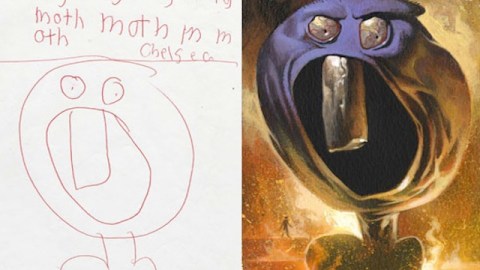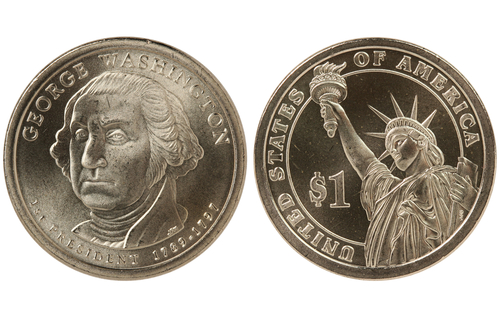Killing Creativity: Why Kids Draw Pictures of Monsters & Adults Don’t

What’s the Big Idea?
The Monster Engine is one of the best ideas I’ve come across. It’s a book, demonstration, lecture and gallery exhibition created by Dave Devries. The premise is simple: children draw pictures of monsters and Devries paints them realistically. According to the website, the idea was born in 1998 when Devries took an interest in his niece’s doodles. As a comic addict, Devires wondered if he could use color, texture and shading to bring his niece’s drawings to life.
But Devries had a larger goal: he wanted to always see things as a child. Why? In many ways, children flourish where adults fail. Children are more creative and are natural inventors. Their worldview is incomplete and demands discovery. They prosper because they embrace their ignorance instead of ignoring it. And they are willing to explore, investigate and put their ideas to the test because they are willing to fail. Unlike adults, they don’t care how other people perceive or evaluate their ideas, and they’re unconcerned with the impossible or what doesn’t work.
Growing up, to be sure, has its benefits. As we age, our intellect sharpens and willpower strengthens. We come to control our thoughts and desires. We identify goals and hone our skills. But growing up comes at a cost: we lose our naiveté that facilitates creativity and idea generation. A study conducted between 1959 and 1964 involving 350 children found that around 4th grade our tendency to daydream and wonder declines sharply. In other words, Picasso was right: “Every child is an artist. The problem is how to remain an artist once we grow up.”
Age doesn’t necessarily squander our creative juices, but when we make the leap from elementary school to middle school our worldview becomes more realistic and cynical. The question is: what did Jobs and Spielberg do differently? How do we maintain our naiveté?
A study conducted several years ago by Darya Zabelina and Michael Robinson of North Dakota State University gives us a simple remedy. The psychologists divided a large group of undergraduates into two groups. The first group was given the following prompt:
You are 7 years old. School is canceled, and you have the entire day to yourself. What would you do? Where would you go? Who would you see?
The second group was given the same prompt minus the first sentence. This means they didn’t imagine themselves as seven years old – they remained in their adult mindset.
Next, the psychologists asked their subjects to take ten minutes to write a response. Afterwards the subjects were given various tests of creativity, such as inventing alternative uses for an old tire, or completing incomplete sketches. (As well as other tasks from the Torrance test of creativity.) Zabelina and Robinson found that, “individuals [in] the mindset condition involving childlike thinking…exhibited higher levels of creative originally than did those in the control condition.” This effect was especially pronounced with subjects who identify themselves as introverts.
What happens to our innate creativity when we age? Zabelina and Robinson discuss a few reasons. The first is that regions of the frontal cortex – a part of the brain responsible for rule-based behavior – are not fully developed until our teenage years. This means that when we are young our thoughts are free-flowing and without inhibitions. Curiosity, not logic and reason, guides our intellectual musings. The second is that current educational practices discourage creativity.
As famed speaker Ken Robinson said: “the whole system of public education around the world is a protracted process of university entrance. And the consequence is that many highly talented, brilliant, creative people think they’re not, because the thing they were good at school wasn’t valued, or was actually stigmatized.”
No matter the reasons, the authors stress, adults can still tap into their more imaginative younger selves. And this brings me back to The Monster Engine and Dave Devries.
Devries’ drawings capture the lesson from this enlightening research well. When it comes to being creative and coming up with new and fresh ideas, children are experts. But in order to harness and hone our creative juices the cognitive tool set of an adult is vital. The children’s drawings, after all, couldn’t have come to life without Devries. The important part is that Devries maintained his naïveté by staying true to the original work. He didn’t change the drawing, he enhanced it.
What’s the Significance?
This approach is behind the success of countless intellectuals and inventors thoroughout history, including Picasso. It is the reason Einstein stressed that imagination is more important than knowledge and, striking a very similar cord to Zabelina and Robinson’s research, suggested that “to stimulate creativity, one must develop the childlike inclination for play and the childlike desire for recognition.”
Again, it’s often beneficial to approach life with an adult mindset – you probably don’t want to get too creative with your taxes – but when it comes to using your imagination, thinking of oneself as a child facilitates more original thinking.




